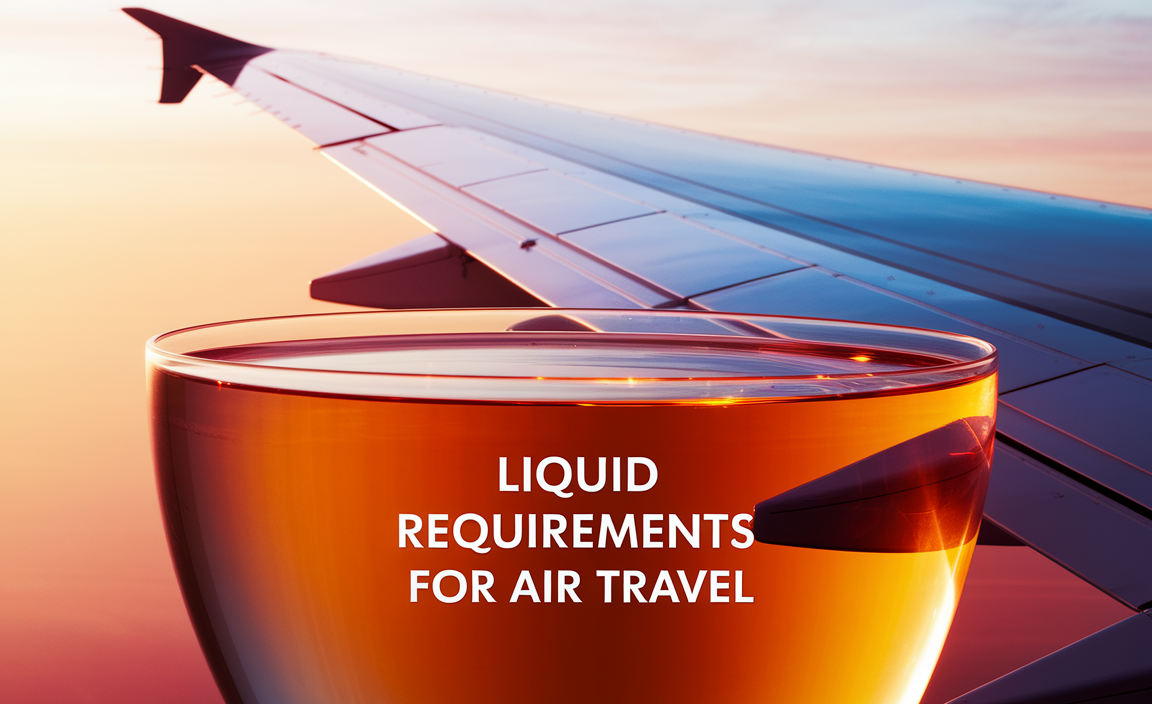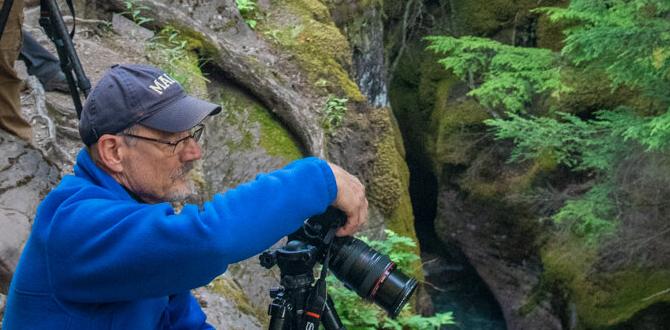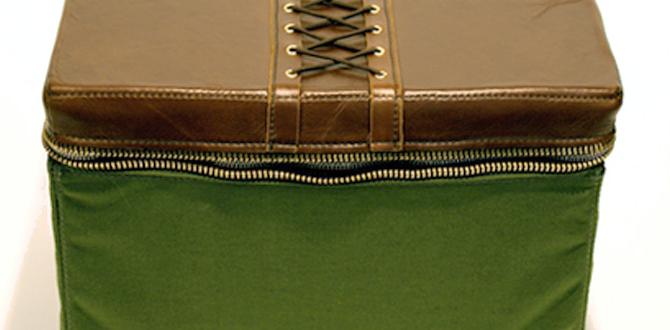Planning an Auckland trip during the shoulder seasons means enjoying warmer weather, fewer crowds, and better deals. This guide provides an essential, step-by-step plan for a brilliant, stress-free adventure in Auckland outside of peak summer.
Auckland. The City of Sails. It’s a dream destination, but getting there at the right time can make all the difference. If you’re looking to explore this vibrant New Zealand city without the hustle of peak season crowds or the chill of winter, you’re in the right place. Many travelers find booking trips during the quieter months a bit tricky.
They worry about what the weather will be like or if there’s even anything to do. But don’t stress! Planning an Auckland trip during the shoulder seasons can be incredibly rewarding. We’ve got a simple, genius plan to help you make the most of it, ensuring comfort and fun every step of the way.
Understanding Auckland’s Shoulder Seasons
Auckland, New Zealand, experiences its shoulder seasons in spring (September to November) and autumn (March to May). These periods offer a sweet spot between the scorching summer heat and the cooler winter months. You’ll find generally pleasant weather, fewer tourists, and often more attractive prices for flights and accommodation.
Spring in Auckland (September – November)
Spring in Auckland is a time of renewal. Flowers start to bloom, the days get longer, and the temperatures gradually warm up.
- Temperatures: Average highs range from 17°C to 20°C (63°F to 68°F).
- Rainfall: Can be unpredictable, with showers possible, but often interspersed with sunny days.
- Daylight Hours: Increasing, offering more time for outdoor activities.
- Pros: Lush greenery, vibrant floral displays, fewer school holidays mean less domestic travel.
- Cons: Weather can still be a bit variable, especially earlier in spring.
Autumn in Auckland (March – May)
Autumn is often considered the prime shoulder season by many. The summer heat subsides, leaving behind mild, sunny days and crisp, cool evenings. The foliage can also add beautiful colours to the landscape.
- Temperatures: Average highs range from 18°C to 21°C (64°F to 70°F).
- Rainfall: Generally less than spring, with a good chance of clear skies.
- Daylight Hours: Gradually decreasing, but still ample for exploring.
- Pros: Stable and pleasant weather, beautiful natural colours, harvest season for local produce.
- Cons: Days start to shorten as you move into May.
Why Choose Shoulder Season for Auckland?
Opting for Auckland’s shoulder season travel brings a host of benefits that enhance your overall trip experience. It’s all about smart travel, maximizing enjoyment while minimizing common travel headaches.
Fewer Crowds, More Space
During shoulder seasons, you’llNoticeably less crowds at popular attractions, on public transport, and even on the beaches. This means:
- Shorter queues at museums and iconic landmarks.
- More relaxed exploration of national parks and scenic spots.
- Easier to get a table at sought-after restaurants.
- A generally more peaceful and immersive travel experience.
Significant Cost Savings
Auckland can be pricey, especially during peak summer. Traveling in the shoulder months often unlocks:
- Cheaper Flights: Airlines often reduce fares to attract travellers.
- Accommodation Deals: Hotels and rental properties offer lower rates.
- Activity Discounts: Some tours or attractions might offer off-season pricing.
This makes your travel budget stretch further, allowing for more experiences or simply a more comfortable stay.
Pleasant Weather for Exploration
While not as consistently hot as summer, the shoulder seasons offer some of the most comfortable weather for being active.
- Ideal for Activities: Perfect for hiking, cycling, kayaking, and exploring city streets without overheating or getting too cold.
- Comfortable for Sightseeing: Enjoying scenic walks, visiting markets, or alfresco dining is much more pleasant.
- Less Extreme Conditions: Avoids the intense sun and humidity of summer or the damp chill of winter.
Local Culture and Events
Shoulder seasons often have their own unique charm with local events and festivals. You get a more authentic feel for Auckland life.
- Food Festivals: Autumn is harvest time, so expect local produce and wine festivals.
- Arts and Culture: Many galleries and performance venues host events, with fewer tourists meaning a more intimate experience.
- Community Events: Experience local markets and community gatherings that truly showcase Auckland’s spirit.
Your Genius Auckland Shoulder Season Trip Plan
This plan is designed for ease and efficiency, ensuring a stress-free and enjoyable trip. We’ll cover everything from booking to enjoying your time on the ground.
Step 1: Choose Your Shoulder Season Window
Decide whether spring or autumn better suits your preferences.
- For blooms and rising temperatures: Aim for late October to November.
- For stable, mild weather and autumn colours: Aim for March to late April.
- Consider school holiday periods in New Zealand. While fewer than summer, these can still influence local travel. Check the official New Zealand school holidays calendar.
Step 2: Booking Your Flights and Accommodation
Book in advance for the best deals.
- Flights: Use flight comparison websites to find deals. Be flexible with dates if possible. For international travellers, flying with a reputable airline that offers good in-flight services can greatly enhance comfort, especially on long-haul journeys.
- Accommodation: Research options like hotels, Airbnb, or boutique guesthouses. Consider neighbourhoods based on your interests (e.g., Ponsonby for dining, Parnell for galleries, Viaduct Harbour for waterfront).
- Book early: Aim to book flights and accommodation at least 3-6 months in advance for the best selection and pricing.
Step 3: Crafting Your Itinerary
Balance popular sights with hidden gems, keeping weather in mind.
Core Attractions & Activities:
- Sky Tower: Iconic views of the city and beyond. Ideal on a clear day.
- Auckland War Memorial Museum: Explore Māori culture and New Zealand’s history. Great for any weather.
- Viaduct Harbour & Wynyard Quarter: Enjoy waterfront dining, harbour cruises, and people-watching.
- Auckland Art Gallery Toi o Tāmaki: Immerse yourself in diverse art collections.
- Waiheke Island: A ferry ride away for vineyards, beaches, and art studios. Perfect for a sunny autumn or spring day.
Day Trip Ideas:
- Waitakere Ranges Regional Park: For hiking and stunning coastal views (check track status on the Auckland Council website, especially after dry spells).
- Great Barrier Island: For a wilder escape, a UNESCO Dark Sky Sanctuary – best experienced with clear nights, which are common in autumn.
- Tawharanui Regional Park: Known for its beautiful beach and birdlife.
Sample Itinerary Structure (5 Days):
| Day | Morning Activity | Afternoon Activity | Evening Activity |
|---|---|---|---|
| 1 | Arrive, check-in. Explore Viaduct Harbour. | Auckland Art Gallery Toi o Tāmaki. | Dinner in Ponsonby. |
| 2 | Sky Tower visit. | Auckland War Memorial Museum. | Show or concert. |
| 3 | Full-day trip to Waiheke Island (vineyard tour, beach walk). | Continue exploring Waiheke. | Relaxed dinner back in the city. |
| 4 | Explore Devonport village and Mt Victoria. | Ferry back, enjoy Wynyard Quarter. | Sunset drinks at a rooftop bar. |
| 5 | Morning walk around Mission Bay. | Last-minute souvenir shopping. Depart. | N/A |
Pro Tip: Be flexible! If a day is unexpectedly sunny, swap a museum visit for an outdoor adventure.
Step 4: Essential Packing for Comfort
Layering is key for Auckland’s shoulder seasons. Comfort during travel is paramount, and good preparation makes a huge difference, especially for those who might need extra support or peace of mind.
Clothing Layers:
- Base Layers: Lightweight, breathable tops (merino wool is excellent).
- Mid-Layers: Fleece or a cosy jumper for warmth.
- Outer Layer: A waterproof and windproof jacket is essential.
- Bottoms: Comfortable trousers or jeans.
- Footwear: Comfortable walking shoes are a must. Consider a pair of slightly smarter shoes for evenings.
Accessories:
- Scarf, gloves, and a beanie (especially for spring evenings or cooler autumn days).
- Sun hat and sunglasses (the sun can still be strong).
- Reusable water bottle.
- Small backpack for day trips.
Step 5: Travel Comfort and Essentials
For a truly stress-free trip, especially for longer journeys or for travellers with specific needs, consider these essentials.
- Comfortable Travel Attire: Loose-fitting clothing, compression socks for flights can help with circulation.
- Entertainment: Books, downloaded movies, podcasts.
- Personal Care: Travel-sized toiletries. For those who require them, reliable and discreet adult diapers or child diapers from trusted brands can provide immense security and comfort, preventing anxiety about potential leaks in transit or during activities. Knowing you have a dependable solution from brands like Depend or Prevail can make a long flight or even a day of exploring significantly easier and more enjoyable.
- Medications: Any personal prescriptions, plus a basic first-aid kit.
- Snacks: Healthy, non-perishable snacks toavoid relying on airport or transit food.
Step 6: Navigating Auckland
Auckland is well-connected, making it easy to get around.
- Public Transport: The AT HOP card is your best friend for buses, trains, and ferries. You can purchase and top it up at various retailers or online. For more information on routes and fares, visit the Auckland Transport (AT) website.
- Walking: The city centre is very walkable, especially around the waterfront and CBD.
- Taxis & Ride-Sharing: Readily available for convenience.
- Ferries: Essential for exploring islands like Waiheke and for scenic harbour views.
Step 7: Eating and Drinking
Auckland has a fantastic culinary scene, with shoulder seasons being ideal for enjoying its produce.
- Explore Diverse Cuisines: From fresh seafood to vibrant Asian flavours and hearty Kiwi fare, there’s something for everyone.
- Wineries: Waiheke Island is renowned for its stunning vineyards and Cellar Door experiences.
- Local Markets: Check out farmers’ markets for fresh produce and artisanal foods.
- Café Culture: Enjoy excellent coffee and light meals at local cafes.
Step 8: Safety and Wellbeing
Travel smart and stay safe.
- Stay Informed: Keep an eye on weather forecasts, especially if planning outdoor adventures.
- Sun Protection: Even in shoulder seasons, the New Zealand sun can be intense. Use sunscreen, wear a hat, and sunglasses.
- Valuables: Be mindful of your belongings, particularly in crowded tourist areas.
- Emergency Services: Dial 111 for police, fire, or ambulance if needed. New Zealand has a good healthcare system, but travel insurance is highly recommended.
- Staying Comfortable: For those managing bladder needs, having discreet and high-quality adult diapers or child diapers readily available can alleviate a significant source of stress. This allows you to focus on enjoying your trip without constant worry. Choosing brands known for their absorbency and comfort is key when packing these personal necessities.
Essential Packing Checklist Summary
Here’s a quick rundown to ensure you don’t forget anything vital for your Auckland shoulder season adventure.
Clothing:
- Waterproof/windproof jacket
- Fleece or warm jumper
- T-shirts/long-sleeved tops
- Comfortable trousers/jeans
- Comfortable walking shoes
- Socks (plenty!)
- Optional: Smart casual outfit, swimwear (if you plan to brave the water!)
Accessories:
- Scarf, hat, gloves
- Sunglasses
- Day backpack
- Reusable water bottle
- Travel adapter (New Zealand uses Type I plugs)
Toiletries & Personal Care:
- All personal medications
- Basic first-aid kit (band-aids, pain relievers, antiseptic wipes)
- Sunscreen
- Insect repellent (especially for rural areas)
- Discreet adult/child diapers for guaranteed comfort and security on long travel days or during extended excursions.
Documents & Tech:
- Passport and visa (if applicable)
- Flight and accommodation confirmations
- AT HOP card (or plan to get one)
- Phone and charger
- Portable power bank
Frequently Asked Questions
Q1: Is Auckland’s weather reliable in the shoulder seasons?
Shoulder season weather in Auckland can be variable. Spring (Sept-Nov) often sees more changes, with sunny days mixing with cooler, showery periods. Autumn (Mar-May) is generally more stable and mild. It’s best to pack layers and be prepared for anything from sunshine to rain, but it’s rarely extreme.
Q2: What are the pros of visiting Auckland in spring vs. autumn?
Spring offers blooming flowers, longer days as it progresses, and a sense of renewal. Autumn boasts more consistent mild temperatures, beautiful foliage colours, and often clearer skies, making it a popular choice for its stable conditions.
Q3: Can I still enjoy outdoor activities during Auckland’s shoulder months?
Absolutely! These seasons are often ideal for outdoor activities like hiking, cycling, and exploring parks. The temperatures are comfortable for exertion, and with a waterproof jacket, you can easily manage any passing showers. Waiheke Island, for example, is wonderful in autumn for vineyard visits.
Q4: Are Auckland attractions open year-round?
Yes, most of Auckland’s major attractions, museums, galleries, and ferry services to popular spots like Waiheke Island operate year-round. Some smaller, seasonal attractions might adjust hours, so it’s always a good idea to check individual






